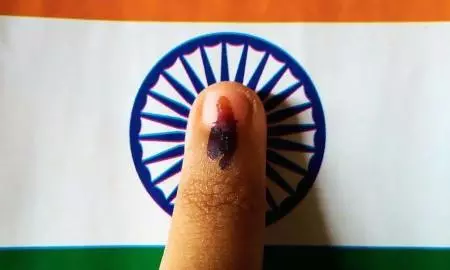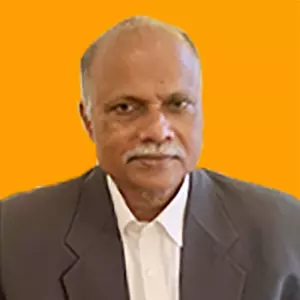
- Home
- India
- World
- Premium
- THE FEDERAL SPECIAL
- Analysis
- States
- Perspective
- Videos
- Sports
- Education
- Entertainment
- Elections
- Features
- Health
- Business
- Series
- In memoriam: Sheikh Mujibur Rahman
- Bishnoi's Men
- NEET TANGLE
- Economy Series
- Earth Day
- Kashmir’s Frozen Turbulence
- India@75
- The legend of Ramjanmabhoomi
- Liberalisation@30
- How to tame a dragon
- Celebrating biodiversity
- Farm Matters
- 50 days of solitude
- Bringing Migrants Home
- Budget 2020
- Jharkhand Votes
- The Federal Investigates
- The Federal Impact
- Vanishing Sand
- Gandhi @ 150
- Andhra Today
- Field report
- Operation Gulmarg
- Pandemic @1 Mn in India
- The Federal Year-End
- The Zero Year
- Science
- Brand studio
- Newsletter
- Elections 2024
- Events
- Home
- IndiaIndia
- World
- Analysis
- StatesStates
- PerspectivePerspective
- VideosVideos
- Sports
- Education
- Entertainment
- ElectionsElections
- Features
- Health
- BusinessBusiness
- Premium
- Loading...
Premium - Events

The biggest risk to democracy from the proposal is that it effectively scuppers the check the Rajya Sabha presents to radical departures from the normal
The hubbub over Prime Minister Narendra Modi’s ‘One Nation, One Election’ proposal is more indignant than intelligent, its benefits for the ruling side exaggerated. Both the arguments for and against the proposal underestimate the voter’s capacity for discernment. Yet, there is one special circumstance in which simultaneous polls to all levels of the government could weaken democracy, and that is sufficient to junk the proposal.
Anecdotal evidence, as well as statistical analysis, shows that India’s voters are capable of voting different parties for different levels of the government, even when the elections are conducted simultaneously.
Exaggerated claims on huge savings
Let us look at some of the arguments in support of holding all elections together. One is that it would save money. This is true, but the saving can be exaggerated. There would be saving on the deployment of security forces to maintain peace during the polls, and a little bit on campaigning by the so-called star campaigners of each party. They would not need to come separately to each place for elections to the state assembly and Parliament.
It is easy to overstate the saving on the administrative machinery for conducting elections. True, civil servants would need to be deployed as polling staff only once in five years, in the case of simultaneous polls. However, the number of voting machines would have to be double the present number, one set for the Assembly constituency and its roster of candidates, and the other set for the Lok Sabha seat. The number of people required to transport them, secure them, program them and tally the votes from them would go up, even if not proportionately.
Separate campaigns
Generic party ads on TV and in newspapers, besides posters, would do double duty for state and Parliament elections. However, Lok Sabha and Assembly candidates would hold their own separate campaigns. They would have separate posters, meetings, rallies, state- and constituency-specific issues and workers, and separate sessions for distributing election-eve booze and such other inducements.
The alleged disruption of governance, caused by serial elections and attendant quiet periods for new policy announcements, is mostly illusory. If Assam has elections and is placed under a model code of conduct that bars new policy announcements, that would not affect social or political life in Kerala – apart, perhaps, from an additional TV programme to roast an Assamese politician, should one be found worthy of that attention. That holds true for any pair of states. A Centre hobbled by the model code of conduct would not curb the activities of the state government.
No central government policy or programme should be stalled or hastened on account of an election in a state – after all, they do have different areas of governance to deal with, if they stick to the constitutional division of labour. The model code of conduct at the state level should not affect the working of the central government, nor should that at the Centre affect any single state selectively.
Double-engine growth: Unconstitutional
The Modi slogan of double-engine growth while campaigning in state Assembly elections – if BJP forms the state government, the state would be pulled ahead by two engines, the BJP government at the Centre and the BJP government in the state — amounts to a declaration of blatant partisanship on the part of the central government.
The Centre is constitutionally mandated to treat all the states and their people equally. The promise of special support to BJP-run state governments, implicit in that twin-locomotive imagery, brazenly declares that the central exchequer and policymaking capacity are at the disposal of the BJP to favour states run by it and to deprive states run by other parties. Does the Election Commission care if a particular party seeks to expand its campaign finances to include all of the central government treasury?
This is an unconstitutional, anti-democratic usurpation of power that should be undone. It should not be baked into policy as a premise for changing the election timetable.
Extending or curtailing life of legislatures
Would simultaneous polls to the Lok Sabha and state legislatures prevent the party running the Centre from announcing a special development package of, say, ₹40,000 crore for a particular state headed for the polls, as the BJP had for Bihar? It would. But democratic vigilance should, by itself, prevent any party from treating the nation’s resources as if it were its private discretionary allowance to be splurged on whatever takes its fancy. Achieving that elementary democratic discipline should not come at the expense of curtailing or prolonging the life of legislatures.
Curtailing or prolonging the life of legislatures is precisely what would be required to converge Assembly and Parliament elections. Take the hypothetical example of converging elections in 2024: state legislatures whose terms expire in 2023 would have their life extended to 2024, and state legislatures whose tenures extend beyond 2024 would need to curtail their terms.
In case of no-confidence
And to prevent this convergence being disrupted, in case a government loses the confidence of the majority because of defections, rebellion, death or some similar development, a rule would have to be brought in to rule out no-confidence votes that are not accompanied by a confidence vote to usher in an alternative government. If an alternative government cannot be formed in the existing House and the elections that would produce a government with a majority are still some years away, the state would limp along with a government that does not enjoy the confidence of the people. This ill serves democracy, with no particular gain we can spot. Ducks are not, after all, an endangered species, lame or otherwise.
Biggest risk to democracy
But the biggest risk to democracy from simultaneous elections is that it effectively scuppers the check the Rajya Sabha presents to radical departures from the normal.
At present, a majority in the Lok Sabha gives the government of the day the right to govern, but not necessarily the right to legislate. The right to legislate stems from majority support in both Houses of Parliament. The Rajya Sabha comprises representatives of the states, and is refreshed every two years, each member having a six-year term. In a situation in which different political parties govern different states, a party that wins a majority in the Lok Sabha cannot automatically assume that it can pass any law it wants. The composition of the Rajya Sabha would change gradually, and till the party with a majority in the Lok Sabha acquires a majority in the Rajya Sabha as well, laws that seek radical overhaul of existing arrangements would be difficult to be rammed through both Houses.
Often, elections can take place in an atmosphere of extreme sentiment that favours one party. In 1984, after the assassination of Indira Gandhi, a sympathy wave across India gave Rajiv Gandhi an unprecedented majority in the Lok Sabha. In 2014, nationwide disgust with corruption, produced by a social media campaign that persuaded most people that the Congress-led UPA government presided over assorted scams, swept Modi to power.
In 2019, outrage over the killing of Indian armed forces personnel at Pulwama and the sweet revenge with the bombing of Balakot inside Pakistan gave the Modi government a bigger majority than in 2014. Yet, even after the BJP won several state governments after Modi initially became prime minister in 2014, the BJP-led alliance is still significantly short of a majority in the Upper House. It relies on assorted makeshift alliances to secure a majority for the laws it cares about.
Simultaneous elections held when sentiment rides high would fetch a party favoured by the sentiment majorities in the states as well as at the Centre. This would accelerate the pace of change of the Rajya Sabha’s composition. That, in turn, would greatly dilute the ability of the Rajya Sabha to moderate the pace of legislative change sought by an insurgent government that rode a wave of transient sentiment to victory in Lok Sabha elections. The net result would amount to removal of a vital institutional safeguard against threats to democracy.
This is the most important reason why staggered elections to the state and central legislatures are preferable to simultaneous elections.
(TK Arun is a senior journalist based in New Delhi)
(The Federal seeks to present views and opinions from all sides of the spectrum. The information, ideas or opinions in the articles are of the author and do not necessarily reflect the views of The Federal)


